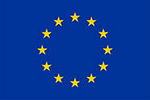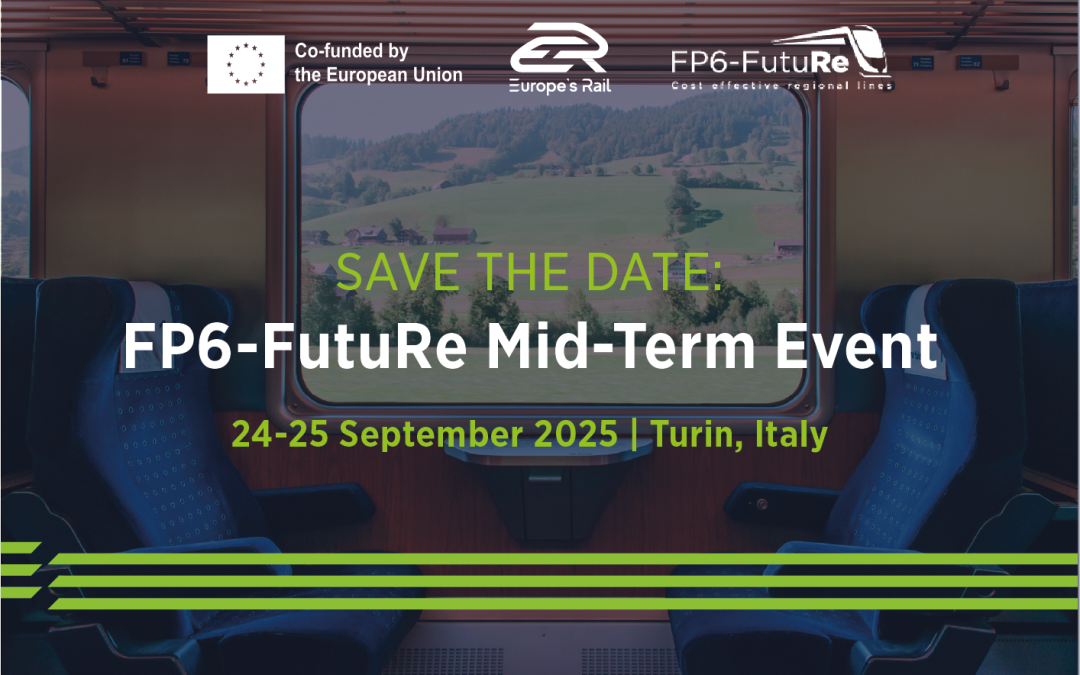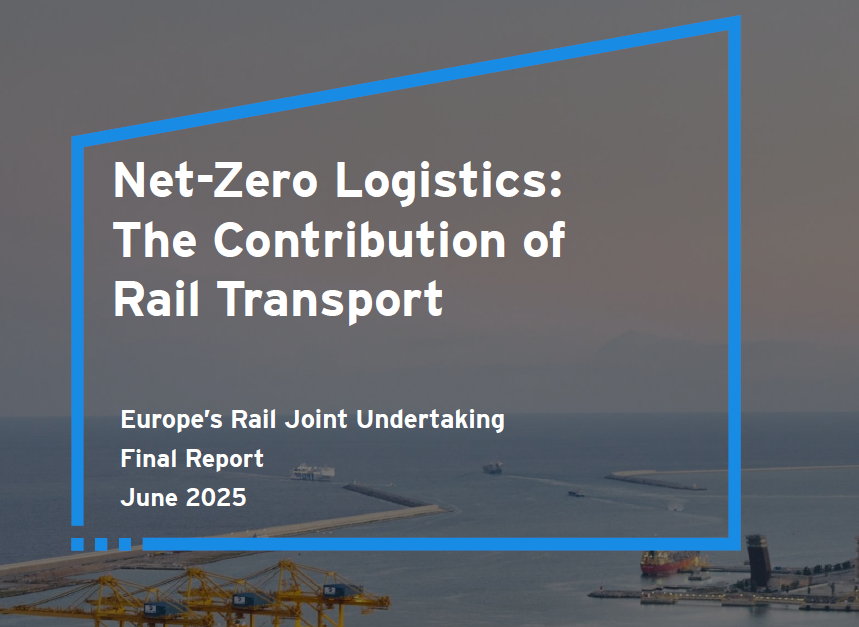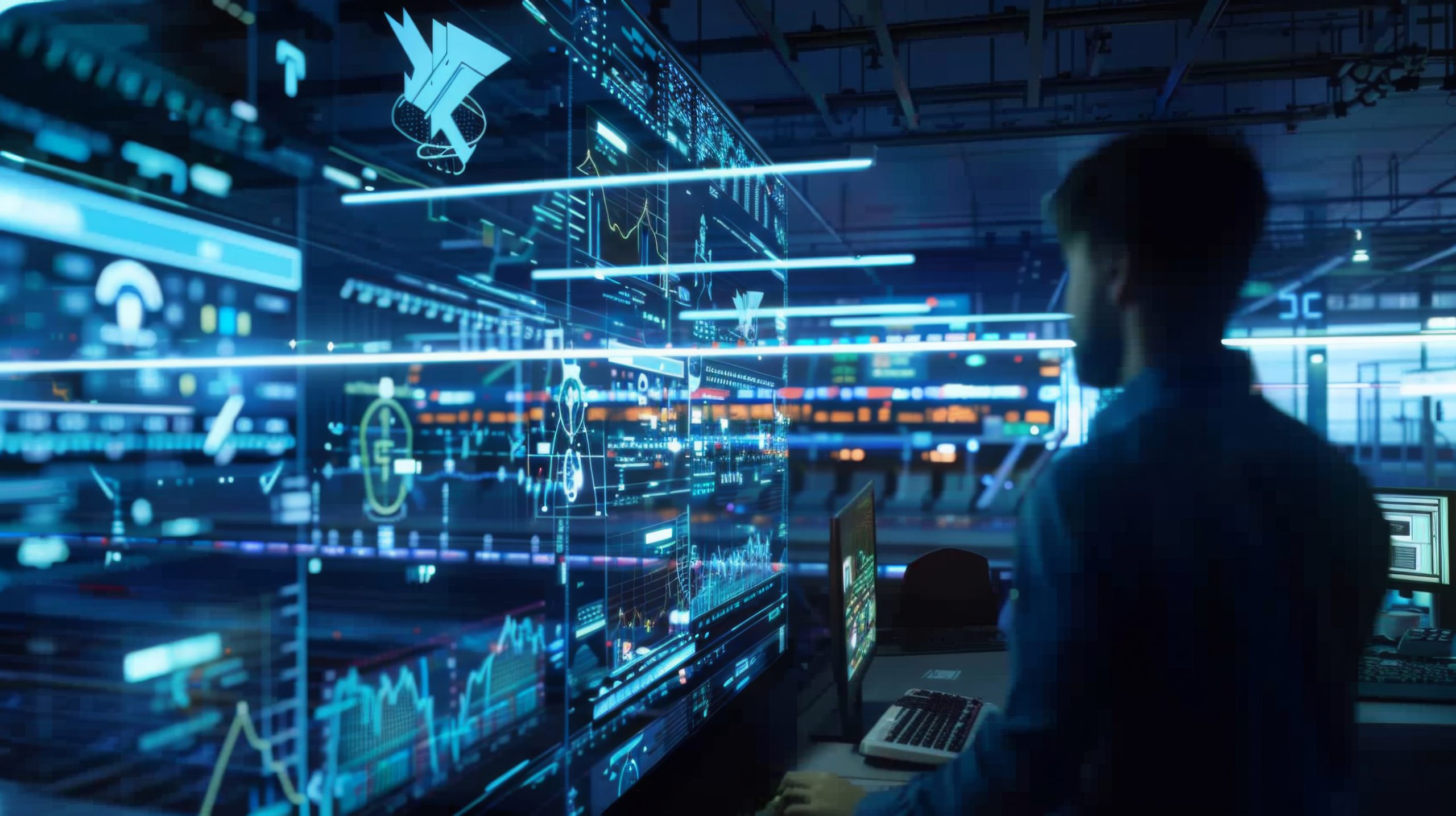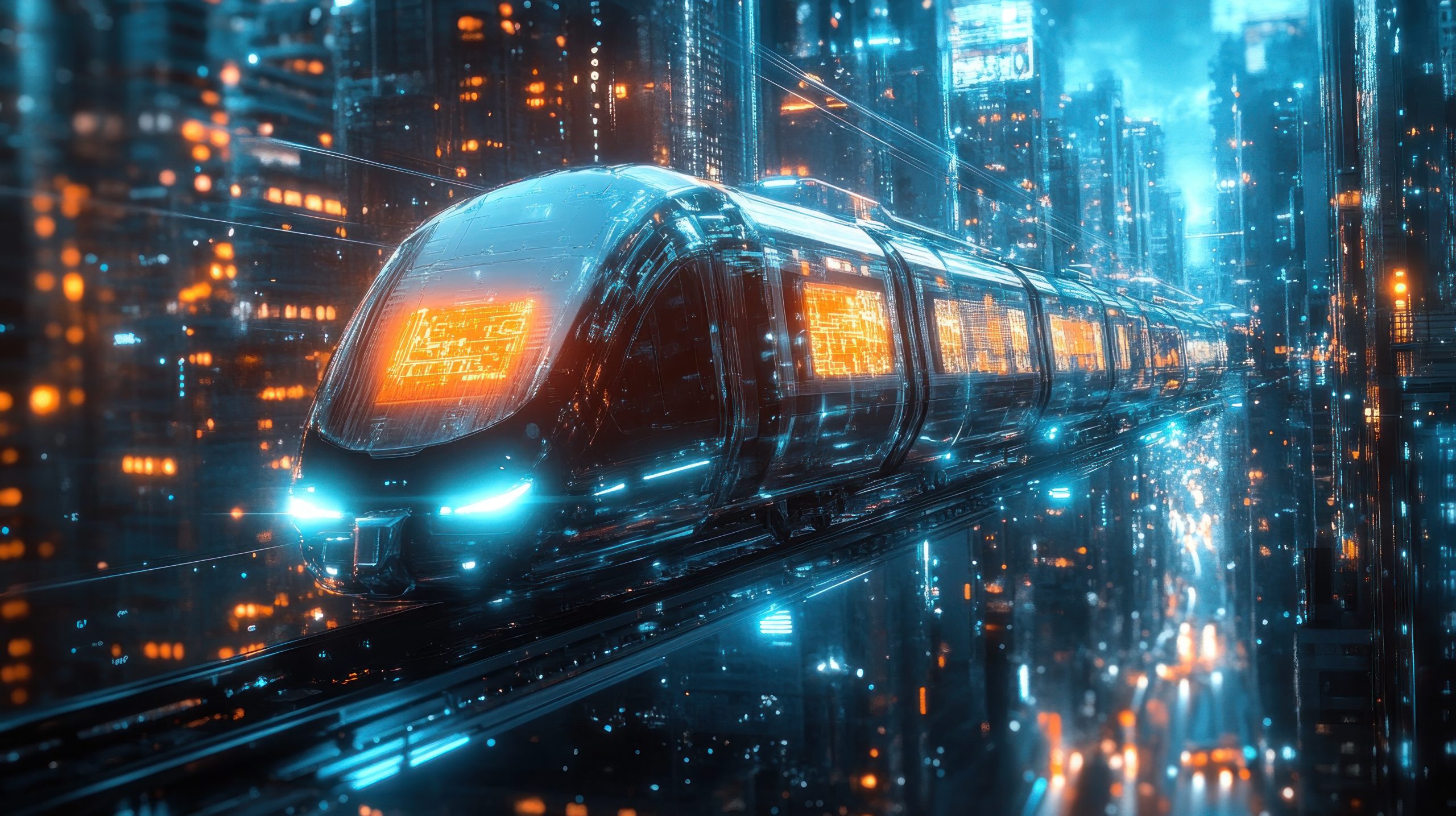Europe must take decisive steps to simplify and modernise its rail systems to strengthen competitiveness,...
To benefit the rail sector and its final users, our new Flagship Project (FP2) 2 R2DATO, worth EUR 160.8 million with 76 partners, is ready to advance automation in railways and leverage digitalisation to make our mobility smarter, more efficient, and greener, contributing to the wider European Union objectives. In this article FP2 R2DATO Coordinator, Frédéric from our Founding Member SNCF explains what to expect from the project.
What are the main objectives of the FP2 R2DATO project and why are they important?
Europe’s mobility challenges in the next decades and the urgent need to improve the European rail transport, prompted the FP2 R2DATO consortium partners to join forces and propose innovative technologies, agile methods, and deployment strategies to meet these challenges through digitalisation and automation of the European Union’s rail system.
Digital solutions will support the necessary transformation, making our mobility smarter, more efficient, and greener. Digital solutions in rail will help us achieve the objectives set by the Union, contributing to a sustainable and smart mobility by means of rail R&I, :
- a shift of a substantial part of the 75% of inland freight carried by road towards rail and inland waterways,
- scheduled collective travel under 500 km to be carbon-neutral by 2030 within the EU,
- traffic on high-speed rail will double by 2030 and triple by 2050,
- rail freight traffic will increase by 50% by 2030 and double by 2050,
- a fully operational, multimodal Trans-European Transport Network (TEN-T) for sustainable and smart transport with high-speed connectivity by 2050.
- improving the competitiveness of rail and supporting the European technological leadership in rail.
Railway digitalisation can improve environmental sustainability and cost efficiency, while increasing safety levels and users’ satisfaction, contributing to the modal shift towards rail. This must be achieved through more advanced levels of automation, enhanced connectivity, and digitalised operations.
In this context, the aim of FP2 R2DATO is to take the major opportunity offered by Digital and Automated up to Autonomous Train Operations (DATO) and develop the Next Generation Autonomous Train Control (. The project aims to deliver scalable automation in train operations, up to GoA4 by 2030 and to enhance infrastructure capacity on existing rail networks. First tangible results of FP2 R2DATO are expected to be delivered by 2025, for key enabling technologies.
Starting the journey towards , in the Europe’s Rail Annual Work Plan 2022-2024 functional and technical Enablers are defined, which shall provide the capabilities to achieve the ambitious goals of the project. The FP2 R2DATO consortium translated these Enablers into the following fields of innovation and improvement, composed of clusters of technical enablers. The below image shows how the Technical Enabler (TE) are clustered, and how these clusters work together to create a real impact for the entire European railway network.
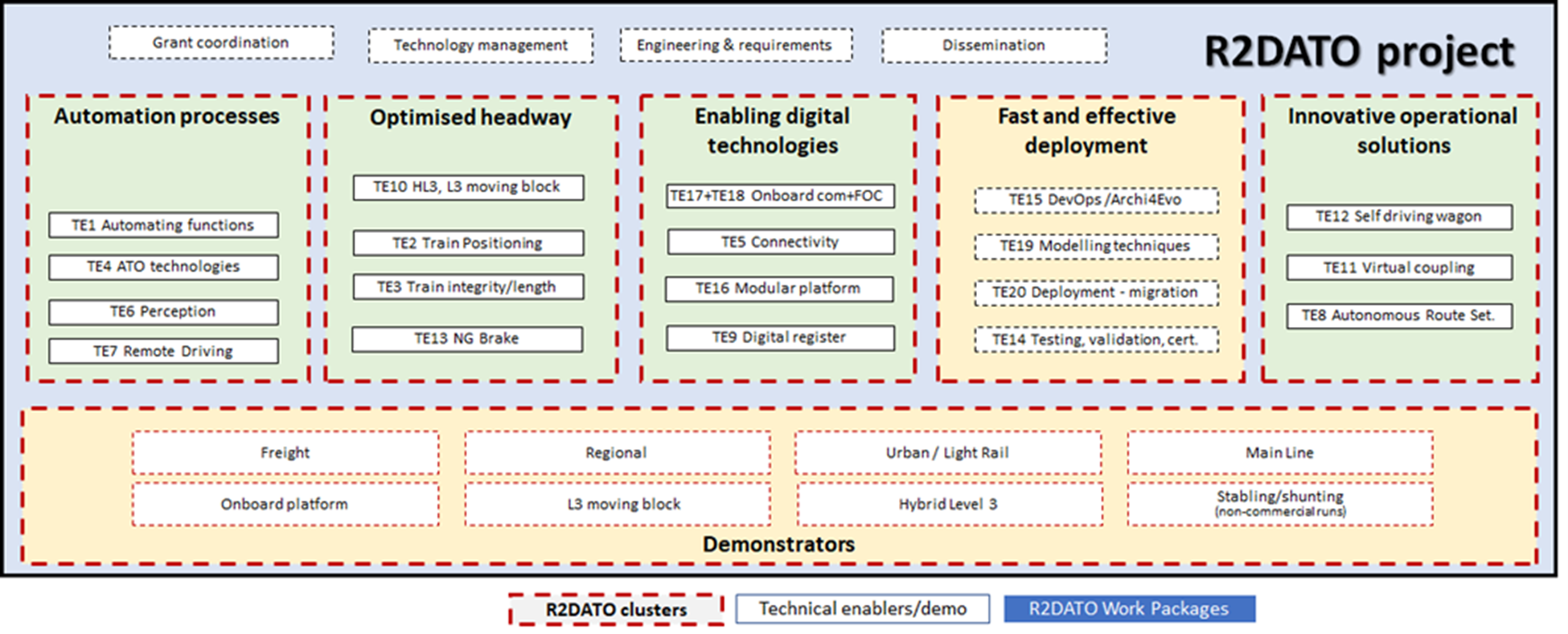
With the clustering of technological and process-oriented enablers, the following specific objectives shall be achieved in FP2 R2DATO:
- Automation Processes
- Deliver scalable automatic train operation (ATO) up to GoA4 for all segments, including freight and urban light rail
- Implementation of operational solutions for automation up to GoA4 to be demonstrated in specific use cases through demonstrators and technical enablers
- Optimised Headway
- Increasing infrastructure capacity
- Reducing operational and life cycle costs by European Train Control System (ETCS) Hybrid Level 3, ETCS Level 3 moving block with new train positioning technologies
- Achieving reproducible braking distances even in low wheel-rail adhesion conditions allowing reduced safety margins
- Innovative Operational Solutions
- Development of concept solutions for autonomous route setting (ARS), virtually coupled train sets (VCTS) and self-driving freight wagons (SDFW)
- Research on new technology for short-range communication (SRC) and relative localisation (RL)
- Fast and Effective Deployment
- Assess Digital and Automated up to Autonomous Train Operations (DATO), identify the potential and derive guidelines for migration and deployment
- Develop a formal modelling approach for railway systems to support generalisation and standardisation (country free) of approval and certification
- Support the decoupling from hardware and software by developing an architecture for evolution as well as rail-industrial DevOps
- Digital Enabling Technologies
- Provide future-proof connectivity, IT and data platforms required for the automation of rail operations
- Increase the cost efficiency in the rail system by leveraging off-the-shelf IT solutions, by decoupling the life cycles of railway applications and connectivity, IT and data platforms, and by allowing to aggregate multiple railway applications on common platforms
- Test and Certification
- Define and provide a common strategy and process for virtual certification of complete railway systems, as well as functional upgrades
- Assess the integration of new technologies and functionalities from Technical Enablers in a virtual railway environment
- Define a network of laboratories with linked test facilities to support certification in a system with a modular architecture, like interoperability tests
- Demonstrators
- Validate the benefits of DATO technical enablers
What are the main challenges the project will have to overcome?
The FP2 R2DATO project is developing technologies in several fields of digital automated up to autonomous train operations, seeking a new paradigm in how the rail system is operated, increasing safety, flexibility, capacity, performance and reducing energy consumption and costs. These technologies can be applied to all rail segments including urban light rail. Future trams will benefit from new functionalities, including remote control, ATO or perception systems. After collecting operational use cases and operational rules from key players of the urban operating community in Europe, FP2 R2DATO activities on tramway will first focus on the remote-control operation, which will allow an operator to operate the vehicle from the office, avoiding the need of getting physically to the tram. This feature is intended to be used during daily operations in depots to support train preparation, its returning from service or for shunting within the depot. A first demonstrator is planned by the end of 2023 or beginning of 2024.
What is the first demonstration expected to be carried out in the project?
The FP2 R2DATO project is developing technologies in several fields of digital automated up to autonomous train operations, seeking a new paradigm in how the rail system is operated, increasing safety, flexibility, capacity, performance and reducing energy consumption and costs. These technologies can be applied to all rail segments including urban light rail. Future trams will benefit from new functionalities, including remote control, ATO or perception systems. After collecting operational use cases and operational rules from key players of the urban operating community in Europe, FP2 R2DATO activities on tramway will first focus on the remote-control operation, which will allow an operator to operate the vehicle from the office, avoiding the need of getting physically to the tram. This feature is intended to be used during daily operations in depots to support train preparation, its returning from service or for shunting within the depot. A first demonstrator is planned by the end of 2023 or beginning of 2024.
When can we expect to see the first results coming from the project and what will these results cover?
Tangible results of FP2 R2DATO are expected to be delivered by 2025 on key topics, such as ATO, ETCS hybrid level 3 and level 3 moving block, digital technologies (5G-connectivity and a standardised onboard ICT-platform), and guidelines and methods for fast and cost-effective deployment and migration of DATO throughout Europe.
Through these technical improvements FP2 R2DATO will meet the objectives and impacts defined in the Europe’s Rail Master Plan and Annual Work Programme, such as contribute to increased punctuality, reliability and productivity of staff, rolling stock and infrastructure.
What will be the main outputs of the project and how will they contribute to improving railway systems in Europe?
- The main outcome from Automation Processes is developing ready to demonstrate ATO technologies, safe perception systems, remote driving and automated functions.
- main outcome is the validation of prototypes ready to demonstrate up-to-date technical solutions for handling more trains on the existing railway network with increased efficiency and safety for the whole system, while reducing maintenance and operational costs.
- The central result from Innovative Operational Solutions is to identify specific use cases where a further innovation beyond GoA4 will bring additional value. The innovative concepts include:
-
- Autonomous Route Setting (AnRS), realising autonomous path allocation on a technical level and increasing capacity on a network.
- Virtually Coupled Train Set (VCTS), enabling the steady state of operation
- Self-Driving Freight Wagon enabling autonomous operations of single wagons, focusing on short-range communication (SRC) to reduce latencies down to the minimum in a train-to-train communication and relative localisation (RL), for example, between two consists or vehicles, to ensure the shortest possible dynamic distance between them.
-
- Fast and Effective Deployment’s main outcome will be the assessment of the technology for DATO which is implemented within FP2 R2DATO. The assessment will lead to the identification of a potential future application. Subsequently to the assessment, a set of guidelines for migration and deployment will be developed. As a third element to reduce cost of deployment of innovations, a new approach for modelling techniques will be developed and used for automatic approval and certification. Additionally, a concept for rail industrial DevOps and dedicated architecture for decoupling hardware and software development will be produced.
- The main results from Digital Enabling Technologies will cover specifications and validated prototypes related to connectivity (both for train-to-ground communication and onboard communications), modular IT platforms, and the digital register as the Single Source of for the railway system.
- A major outcome of Test and Certification is the definition of a general strategy for certification according to the expectations of the stakeholders. The goal is to contribute to the certification methodology adapted to system architecture, including next generation Command and Control System ( new technologies (e.g. safe train localisation).
- Over the course of FP2 R2DATO, and at the latest by 2025/2026, several Demonstrators will be delivered. The demonstrators bring the developed solutions and technical enablers together, with the goal of validating their feasibility and maturity in a real-operation world environment.
Can you explain how next gen CCS and ATO will contribute to the European Green Deal and the Sustainable and Smart Mobility Strategy?
The new Command and Control System (CCS) technology (either ETCS hybrid level 3 or moving block) will increase the number of trains on existing infrastructure, reducing headway between trains and infrastructure costs.
While the ATO even over old will reduce energy consumption and improve regularity by suppressing human factor on the driving .
How has the completed Shift2Rail TAURO project contributed to FP2 R2DATO?
TAURO was the first project that transmitted its final results to FP2 R2DATO. They will be used as a starting point in areas related to ATO, such as solutions for self-diagnostics of brake systems, use of additional sensors for train location, ATO GoA3/4 functional architecture, developed together with X2RAIL-4 project, proposals for certification, data factory proof of concept, specifications and architecture for ATO GoA3/4 over ETCS, freight shunting yard and tramway depot.
But TAURO is not the only project on which FP2 R2DATO will build upon. Shift2Rail’s X2RAIL 4 and X2RAIL 5, SMART, LINX4RAIL, CONNECTA, PINTA, PINTA 2 and PIVOT 2 will also bring some solid results in the fields of environment perception, automation, and traffic management to continue the work.
How is FP2 R2DATO interacting with the other EU-Rail FPs and the System Pillar?
Collaboration between FPs within Europe’s Rail, as well as the System Pillar, is the driver for quality and success, especially in the field of CCS. The collaborative approach will nurture a common ground to Europe’s Rail use cases and architecture framework, therefore building a unified basis in supporting standardised solutions for functions and building blocks, that can be used all over the Single European Rail Area (SERA) and facilitate the deployment of new solutions and transformation of existing rail assets towards a European rail system.
Collaboration will be managed at each step of the development process:
- elaborating consistent specifications
- defining common design and architecture
- testing solutions and measuring impact
Therefore, the FP2 R2DATO technology development approach is based on a structured and continuous interaction between the System Pillar and the Innovation Pillar.
FP2 R2DATO shall design trackside and onboard CCS functionalities as a simplified technical environment for an efficient ERTMS rollout in Europe based on harmonised operational concept provided by the System Pillar. FP2 R2DATO aims to define standards in collaboration with the System Pillar to facilitate the integration of the components and subsystems of the CCS. This can be achieved if all developed solutions designed are standardised and applicable throughout Europe.
Why is the work done in this project important for the final users and especially passengers (how to receive the acceptance from the public to use such technology)?
The railway networks in the EU are among the densest in the world and they compete with road and air. They are also among the oldest and need a substantial technological evolution.
Moreover, to fight climate change efficiently and thus provide an alternative way of transportation, we need to increase the capacity of the networks without increasing road use. This approach is important for both freight and passenger traffic.
FP2 R2DATO aims to take major steps towards automatic train operation, improve railway telecoms and leverage digitalisation in railways. Once implemented, the technologies developed in FP2 R2DATO will directly benefit passengers by making rail more punctual, reliable, and with an increased capacity. Besides that, FP2 R2DATO looks at a holistic system approach, ensuring that changes to infrastructure as well as operations are considered together, essential for their functioning.
